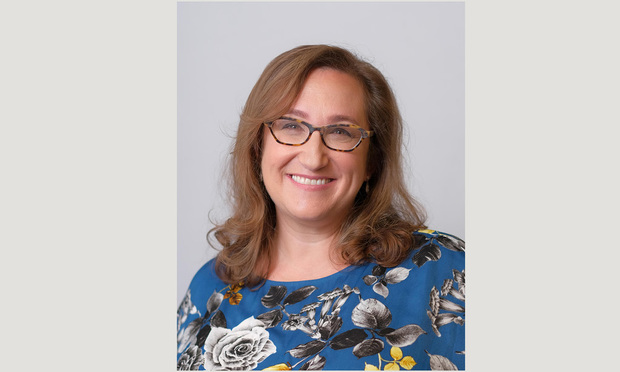"It's Not About Dumping White, Male Lawyers:" Turo CLO Explains Why Latest GC Diversity Push is Different
Michelle Fang, the CLO of San Francisco-based Turo, says giving more work to diverse lawyers doesn't have to mean firing existing, trusted advisers. It's about building new trusted relationships.
January 30, 2019 at 08:09 AM
5 minute read
The original version of this story was published on The American Lawyer
 Michelle Fang, chief legal officer at Turo.
Michelle Fang, chief legal officer at Turo.
The following is an Editor's Letter from Gina Passarella Cipriani the editor-in-chief of The American Lawyer.
Michelle Fang and 169 general counsel at other corporations were riding a high Sunday when news of their open letter to law firms demanding more diversity was met with great praise and excitement.
But one of her comments in a New York Times article about the profession's diversity problem caught the attention of the likes of me. She said she would have a hard time firing the white, male lawyer she has long worked with and trusted if his firm weren't diverse enough. I seized on that as emblematic of why the problem of diversity in law is so difficult to fix.
There is more to the story, however, Fang argued from the hospital, where she had taken a break from being with a sick family member to speak to reporters about these issues that she says are so important to keep at the forefront of the industry's proverbial mind.
What she also had said as part of her quote on that white, male lawyer and his firm, was that she wouldn't have to worry about firing him because he and his firm are actively working to promote women and minorities. In fact, that lawyer asked Fang last year to get one of his female associates on a big matter so that Fang could then credibly write a partnership recommendation letter for the associate.
“I'm not living in that hypothetical world,” Fang said of what she would have to do if the firm wasn't diverse enough.
But still, I asked her how the letter she and her colleagues penned would do more to effect change than the ones that came before it. As one op-ed from a black Big Law partner explains, there is significant skepticism that it will. Fang said she is optimistic this will be different, in part because of the environment we're living in right now, including the #MeToo era.
“There's been a lot more permission for people to speak out about injustices they face,” Fang said.
And the general counsel's promise to divert work away from firms that aren't doing more is a real effort to “vote with their pocketbooks,” Fang said. She said she hopes these GCs will arm the attorneys and diversity and inclusion officers in law firms who care about these issues with proof that clients will take business elsewhere.
But it isn't all about ending existing relationships, Fang said. She thinks firms that have historically struggled in the area of diversity are working to change, too.
“This isn't about dumping white, male lawyers,” Fang said.
She acknowledges she still has to give her most important matters to those trusted advisers she has long used, white, male or not. Even when trusted relationships exist, she said, there are always new matters that require new lawyers to work on them. That's where GCs can really effectuate change, she said.
For example, Fang's company, Turo, had to move its trademark portfolio recently, so Fang sought recommendations from her network of general counsel. She chose a firm where two women would oversee the portfolio. She also needed a new firm to help with some smaller litigation matters. She went back to that network for recommendations and chose a woman-owned firm.
“So, yes, I'm not going to ditch some fantastic lawyer because he's a white male,” Fang said. “He's great and earned my trust.”
But she will spend her company's money on ensuring new lawyers coming into the fold reflect the diversity she wants to see.
“It's not just talk, it's real action,” Fang said,
I asked if giving the smaller matters to diverse lawyers while saving the big, sometimes career-making matters for the old guard was perpetuating the problem. Fang doesn't see it that way.
“It is absolutely true that small matters turn into big matters, and that is how you build trust,” so that the GC wants to hire a lawyer for the bigger matters, Fang said.
Diversity and inclusion efforts aside, she said, that is how all young lawyers build their practices. And when she and 169 of her colleagues go to hire those lawyers, they are focused now more than ever on ensuring the hires are diverse. It is different than it was 10 years ago when similar calls to action were made, Fang said.
“This is about the world we want to live in,” she said.
This content has been archived. It is available through our partners, LexisNexis® and Bloomberg Law.
To view this content, please continue to their sites.
Not a Lexis Subscriber?
Subscribe Now
Not a Bloomberg Law Subscriber?
Subscribe Now
NOT FOR REPRINT
© 2025 ALM Global, LLC, All Rights Reserved. Request academic re-use from www.copyright.com. All other uses, submit a request to [email protected]. For more information visit Asset & Logo Licensing.
You Might Like
View All

LA-Area Law Firms Offer Support as Region Reckons With Raging Wildfires


Church of Scientology Set to Depose Phila. Attorney in Sexual Abuse Case
5 minute readTrending Stories
Who Got The Work
Michael G. Bongiorno, Andrew Scott Dulberg and Elizabeth E. Driscoll from Wilmer Cutler Pickering Hale and Dorr have stepped in to represent Symbotic Inc., an A.I.-enabled technology platform that focuses on increasing supply chain efficiency, and other defendants in a pending shareholder derivative lawsuit. The case, filed Oct. 2 in Massachusetts District Court by the Brown Law Firm on behalf of Stephen Austen, accuses certain officers and directors of misleading investors in regard to Symbotic's potential for margin growth by failing to disclose that the company was not equipped to timely deploy its systems or manage expenses through project delays. The case, assigned to U.S. District Judge Nathaniel M. Gorton, is 1:24-cv-12522, Austen v. Cohen et al.
Who Got The Work
Edmund Polubinski and Marie Killmond of Davis Polk & Wardwell have entered appearances for data platform software development company MongoDB and other defendants in a pending shareholder derivative lawsuit. The action, filed Oct. 7 in New York Southern District Court by the Brown Law Firm, accuses the company's directors and/or officers of falsely expressing confidence in the company’s restructuring of its sales incentive plan and downplaying the severity of decreases in its upfront commitments. The case is 1:24-cv-07594, Roy v. Ittycheria et al.
Who Got The Work
Amy O. Bruchs and Kurt F. Ellison of Michael Best & Friedrich have entered appearances for Epic Systems Corp. in a pending employment discrimination lawsuit. The suit was filed Sept. 7 in Wisconsin Western District Court by Levine Eisberner LLC and Siri & Glimstad on behalf of a project manager who claims that he was wrongfully terminated after applying for a religious exemption to the defendant's COVID-19 vaccine mandate. The case, assigned to U.S. Magistrate Judge Anita Marie Boor, is 3:24-cv-00630, Secker, Nathan v. Epic Systems Corporation.
Who Got The Work
David X. Sullivan, Thomas J. Finn and Gregory A. Hall from McCarter & English have entered appearances for Sunrun Installation Services in a pending civil rights lawsuit. The complaint was filed Sept. 4 in Connecticut District Court by attorney Robert M. Berke on behalf of former employee George Edward Steins, who was arrested and charged with employing an unregistered home improvement salesperson. The complaint alleges that had Sunrun informed the Connecticut Department of Consumer Protection that the plaintiff's employment had ended in 2017 and that he no longer held Sunrun's home improvement contractor license, he would not have been hit with charges, which were dismissed in May 2024. The case, assigned to U.S. District Judge Jeffrey A. Meyer, is 3:24-cv-01423, Steins v. Sunrun, Inc. et al.
Who Got The Work
Greenberg Traurig shareholder Joshua L. Raskin has entered an appearance for boohoo.com UK Ltd. in a pending patent infringement lawsuit. The suit, filed Sept. 3 in Texas Eastern District Court by Rozier Hardt McDonough on behalf of Alto Dynamics, asserts five patents related to an online shopping platform. The case, assigned to U.S. District Judge Rodney Gilstrap, is 2:24-cv-00719, Alto Dynamics, LLC v. boohoo.com UK Limited.
Featured Firms
Law Offices of Gary Martin Hays & Associates, P.C.
(470) 294-1674
Law Offices of Mark E. Salomone
(857) 444-6468
Smith & Hassler
(713) 739-1250






